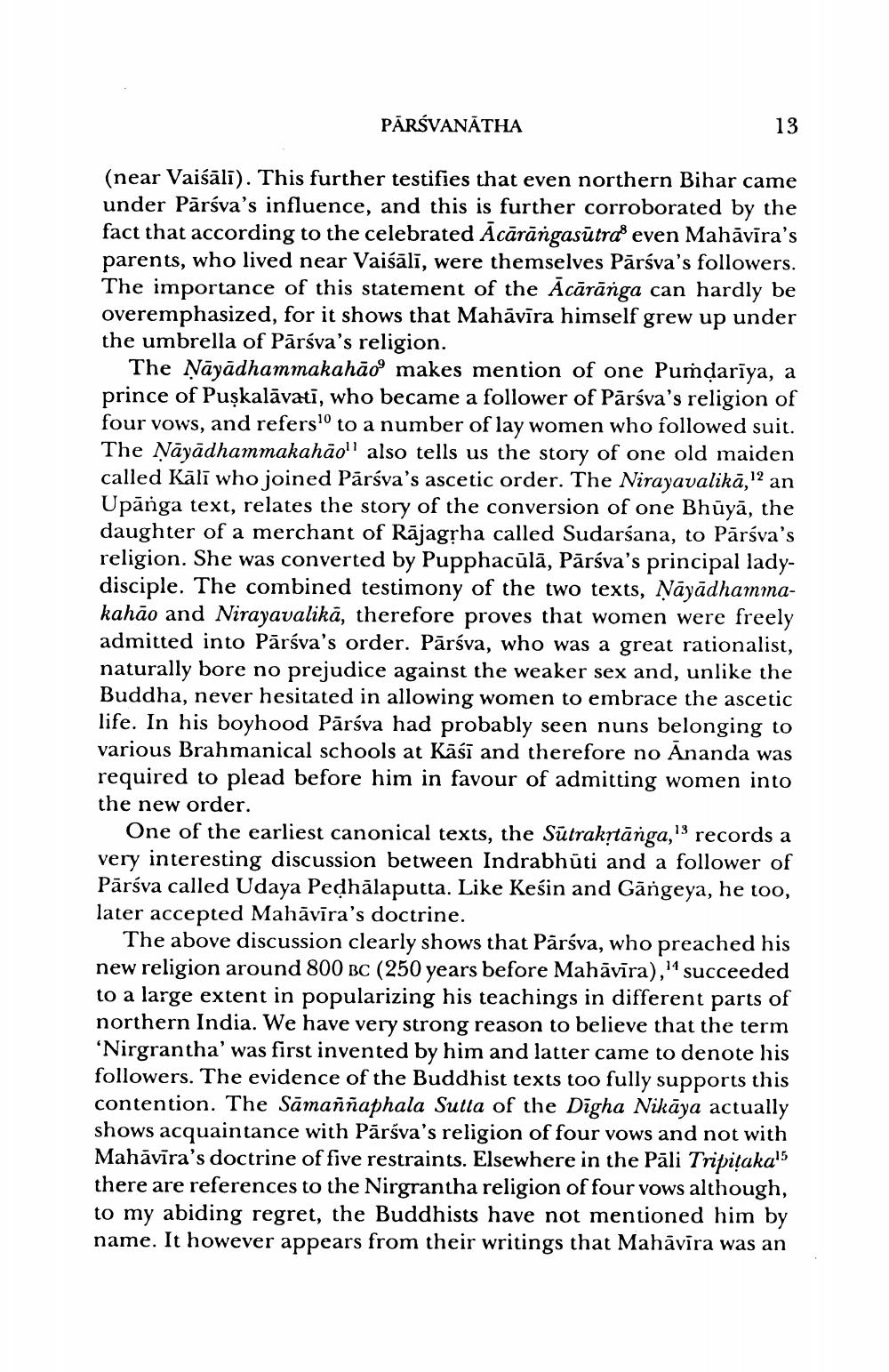________________
PĀRSVANATHA
(near Vaiśāli). This further testifies that even northern Bihar came under Pārsva's influence, and this is further corroborated by the fact that according to the celebrated Ācārāngasūtra even Mahāvīra's parents, who lived near Vaiśāli, were themselves Pārsva's followers. The importance of this statement of the Ācārānga can hardly be overemphasized, for it shows that Mahāvīra himself grew up under the umbrella of Pārsva's religion.
The Ņāyādhammakahāo makes mention of one Pumdarīya, a prince of Puşkalāvati, who became a follower of Pārsva's religion of four vows, and refers to a number of lay women who followed suit. The Nāyādhammakahāoll also tells us the story of one old maiden called Kāli who joined Pārsva's ascetic order. The Nirayavalikā, 12 an Upanga text, relates the story of the conversion of one Bhūyā, the daughter of a merchant of Rājagsha called Sudarśana, to Pārsva's religion. She was converted by Pupphacūlā, Pārsva's principal ladydisciple. The combined testimony of the two texts, Ņāyādhammakahāo and Nirayavalikā, therefore proves that women were freely admitted into Pārsva's order. Pārsva, who was a great rationalist, naturally bore no prejudice against the weaker sex and, unlike the Buddha, never hesitated in allowing women to embrace the ascetic life. In his boyhood Pārsva had probably seen nuns belonging to various Brahmanical schools at Kasi and therefore no Ananda was required to plead before him in favour of admitting women into the new order.
One of the earliest canonical texts, the Sūtrakstānga,'records a very interesting discussion between Indrabhūti and a follower of Pārśva called Udaya Pedhālaputta. Like Keśin and Gāngeya, he too, later accepted Mahāvīra's doctrine.
The above discussion clearly shows that Pārsva, who preached his new religion around 800 BC (250 years before Mahāvīra),succeeded to a large extent in popularizing his teachings in different parts of northern India. We have very strong reason to believe that the term "Nirgrantha' was first invented by him and latter came to denote his followers. The evidence of the Buddhist texts too fully supports this contention. The Samaññaphala Sutta of the Digha Nikāya actually shows acquaintance with Pārsva's religion of four vows and not with Mahāvīra's doctrine of five restraints. Elsewhere in the Pāli Tripitaka'5 there are references to the Nirgrantha religion of four vows although, to my abiding regret, the Buddhists have not mentioned him by name. It however appears from their writings that Mahavira was an




